Introducing Brevis GC: Small But Mighty
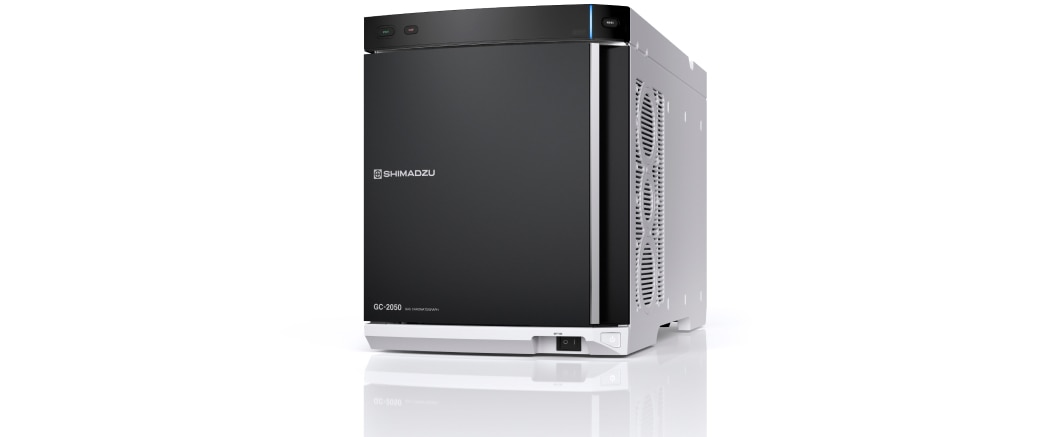
“Smaller, simpler, and easier to use – without compromising performance.” That’s Shimadzu’s Brevis GC in a nutshell. By addressing analysts’ requirements at the core and integrating them into a space-saving design, Brevis GC offers uncompromising analytical performance that is able to meet the diverse needs in laboratories worldwide.
Discover all of Brevis GC here or to read on for more details regarding its key features and applications.
Key Strengths of Brevis GC
The Brevis GC-2050 gas chromatograph is equipped with built-in analytical intelligence and delivers best-in-class analytical performance in a space-saving compact design.
- Compact without Compromise
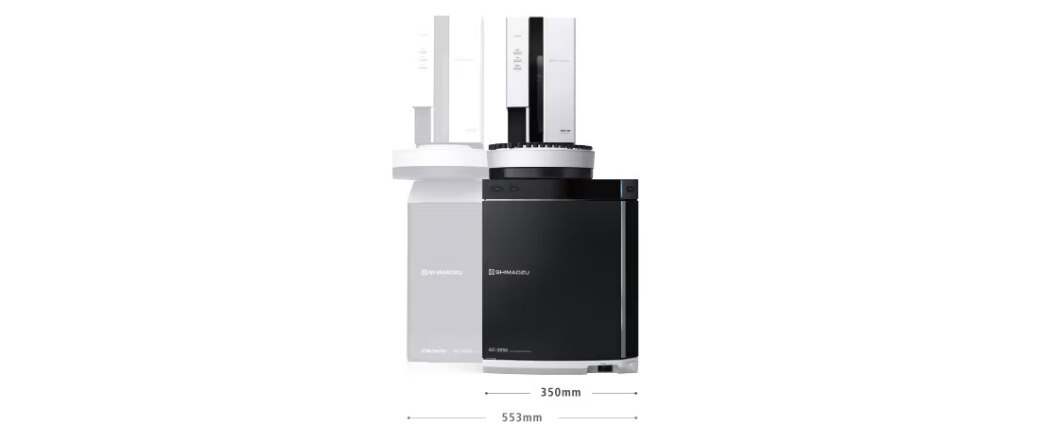
The Brevis GC is a compact solution with a 350 mm system width, including an auto-injector (AOC™-30i), which maximizes lab space efficiency. Compared to the flagship Nexis™ GC, Brevis GC has a reduced system width by approximately 35%. While space-saving, it also adopts an expandable design with the flexibility to connect extra headspace samplers and a mass spectrometer to ensure scalability when needed, thereby addressing the analytical needs of today’s GC/GCMS users.
- Significant Energy/Gas Savings
The Brevis GC consumes 30% less power than conventional GCs. It also minimizes helium usage and supports operations with alternative carrier gases.
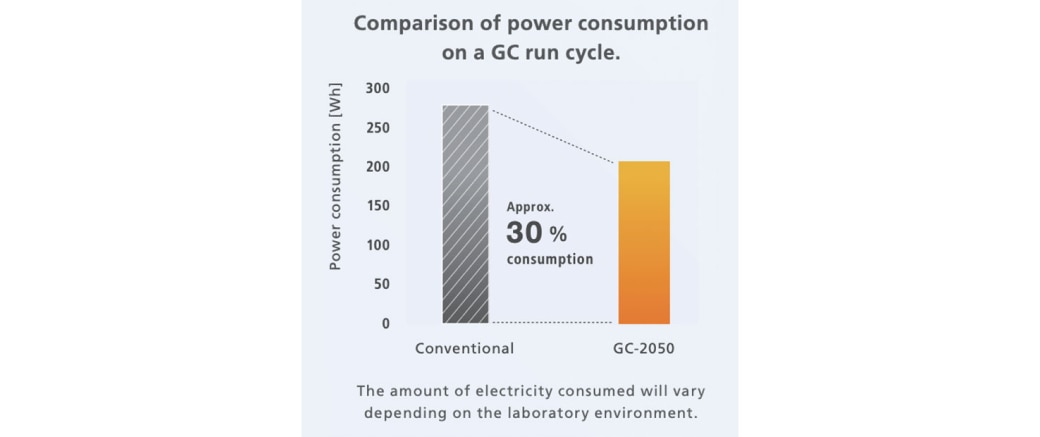
High-performance insulating materials and a smaller oven have eliminated heat loss. As a result, the Brevis GC achieves about a 30% reduction in power consumption during analysis compared to conventional GCs.
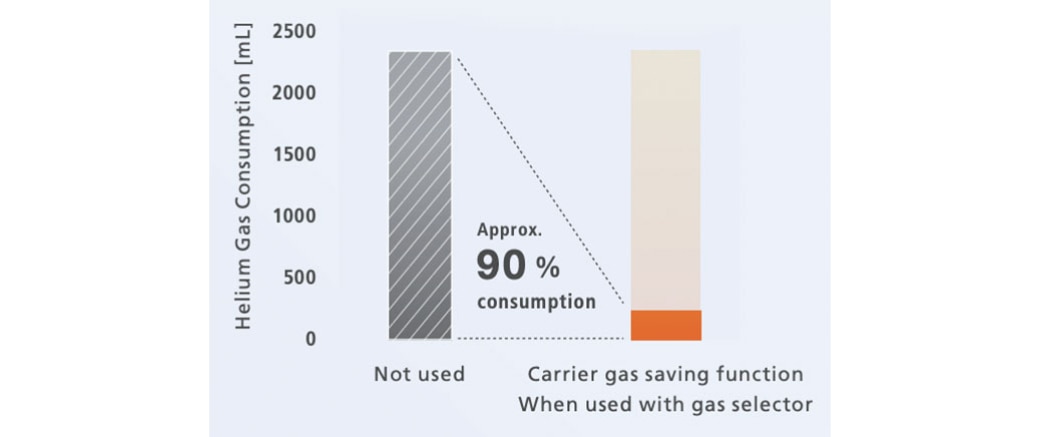
In the split/splitless sample introduction method, the carrier gas save mode can reduce the amount of carrier gas released from the split flow path to outside the GC system after sample transfer to the column for analysis. Further gas savings can be achieved by using the optional gas selector to automatically switch the gas from He to an alternative one such as N2 except during analysis.
- Built-In Analytical Intelligence
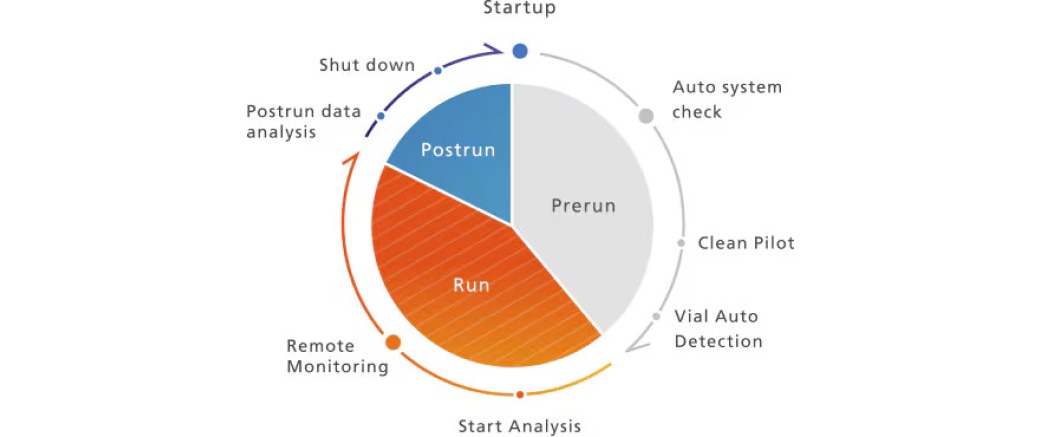
With Remote Display and LabSolutions™ Direct, GC systems can be accessed from anywhere with a smart device or PC, dramatically improving the analysis workflow and enabling new ways of working.
Other intelligent features include:
- Clean Pilot feature to provide automatic conditioning for stable analytical results.
- Automatic Start/Stop function to reduce unnecessary power and gas consumption and hence lower running costs.
- Column Protection to prolong column lifetime.
- Supply Gas Check with automatic switching to backup line when needed to ensure continuous analysis.
- Best-in-Class Performance
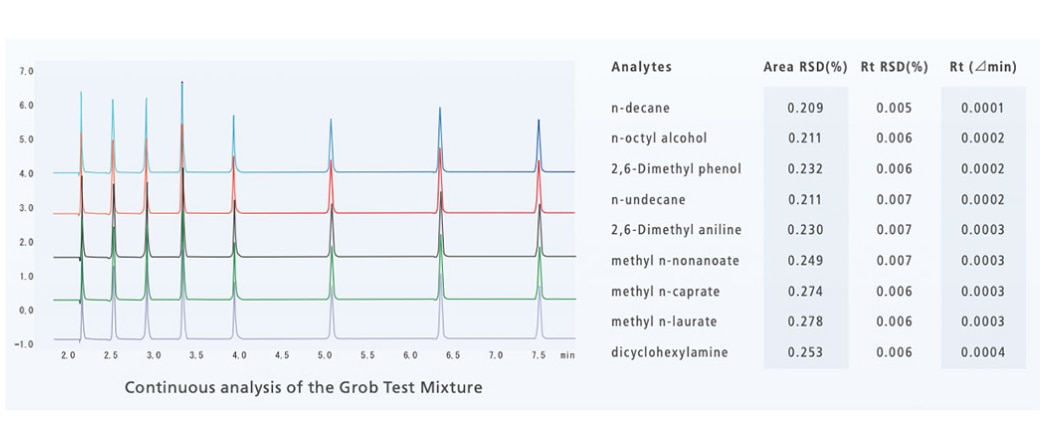
The Brevis GC-2050 provides best-in-class analytical precision. The latest auto-injector, AOC-30i, enables continuous analysis with a high level of precision that cannot be achieved with manual operation. In addition, the flow controller (AFC) with a built-in CPU supports constant linear velocity, constant flow rate, and constant pressure control of carrier gas to achieve outstanding analytical reproducibility with ultra-high speed and ultra-precise control.
Download the brochure now to discover all about Brevis GC.
Application Spotlight: Residual Solvents Analysis from Flexible Packaging Material Using Brevis GC
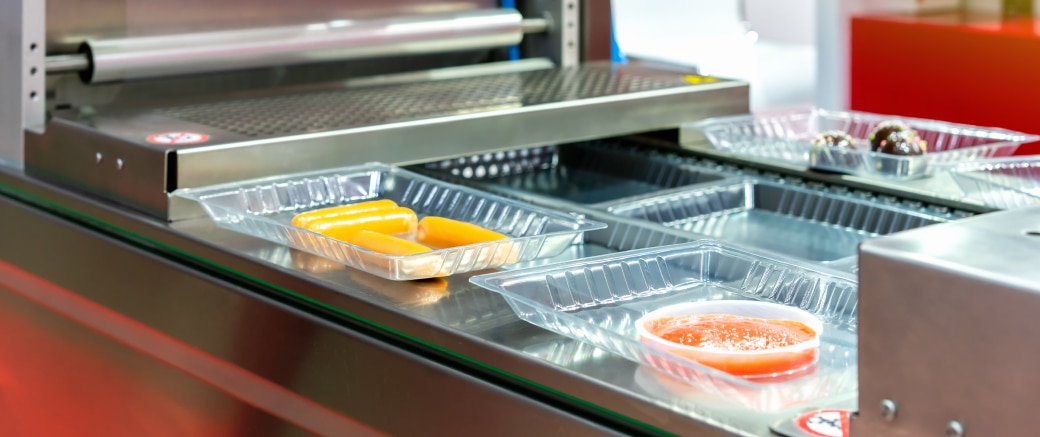
Flexible packaging material includes materials made with such as polyethylene, polypropylene, and polyolefin. They are widely utilized especially in food packing and containers. Manufacturing these materials involves a variety of organic solvents for printing and gluing, and thus, testing for these residual solvent is remarkably important especially for food relevant products.
Gas chromatography (GC) with Headspace sampler (HS) is useful for this type of analysis because the residual solvents are highly volatile. Discover how Brevis GC, coupled with HS-20 NX, can analyze residual solvents in flexible packing materials, referring to the manual published from Flexible Packaging Hygiene Association.
Access insights into the analysis here.
Dual-Column Analysis of Blood Alcohol Content (BAC)
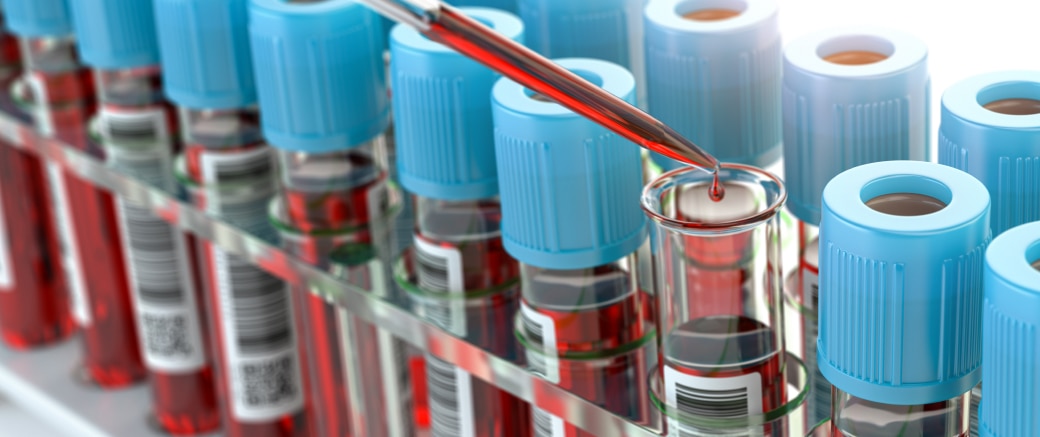
Analysis of blood alcohol content (BAC), as well as other volatile organic compounds (VOCs), is an essential technique in forensics to determine the degree of intoxication caused by alcohol consumption. Generally, this analysis is performed with gas chromatography (GC) coupled with headspace sampler (HS) and frame ionization detector (FID).
To get accurate results, this analysis needs two columns for cross-checking. Both accuracy and quickness are required in this analysis, so connecting a single HS-GC system to two columns leading to each FID fulfills the requests in a remarkably smart way.
Herein, discover how Brevis GC can be utilized for BAC analysis effectively. Using the specialized column series SH-BAC PLUS, linearity and repeatability of ethanol were evaluated, as well as separation of VOCs. Hydrogen is employed as the carrier gas in this system, which achieves faster runtime.
Access insights into the analysis here.
Efficient Analysis of Residual Solvents in Pharmaceuticals

The methods of testing for residual solvents in pharmaceuticals are strictly prescribed in the Japanese Pharmacopoeia 18th Edition (JP18) and the United States Pharmacopeia (USP) General Chapters 467, Residual Solvents. In order to efficiently perform tests for residual solvents in pharmaceuticals under prescribed test methods, it is important to increase the number of instruments installed in laboratories, which often have limited space.
Here, discover how the Brevis GC enable the analysis of Class 1 and 2 water insoluble samples, in accordance with Supplement 2 of the JP18. DMF was used as the solvent.
Access insights into the analysis here
For more, explore our Resource Library and Digital Classrooms. In addition, continue to stay connected with us here.


